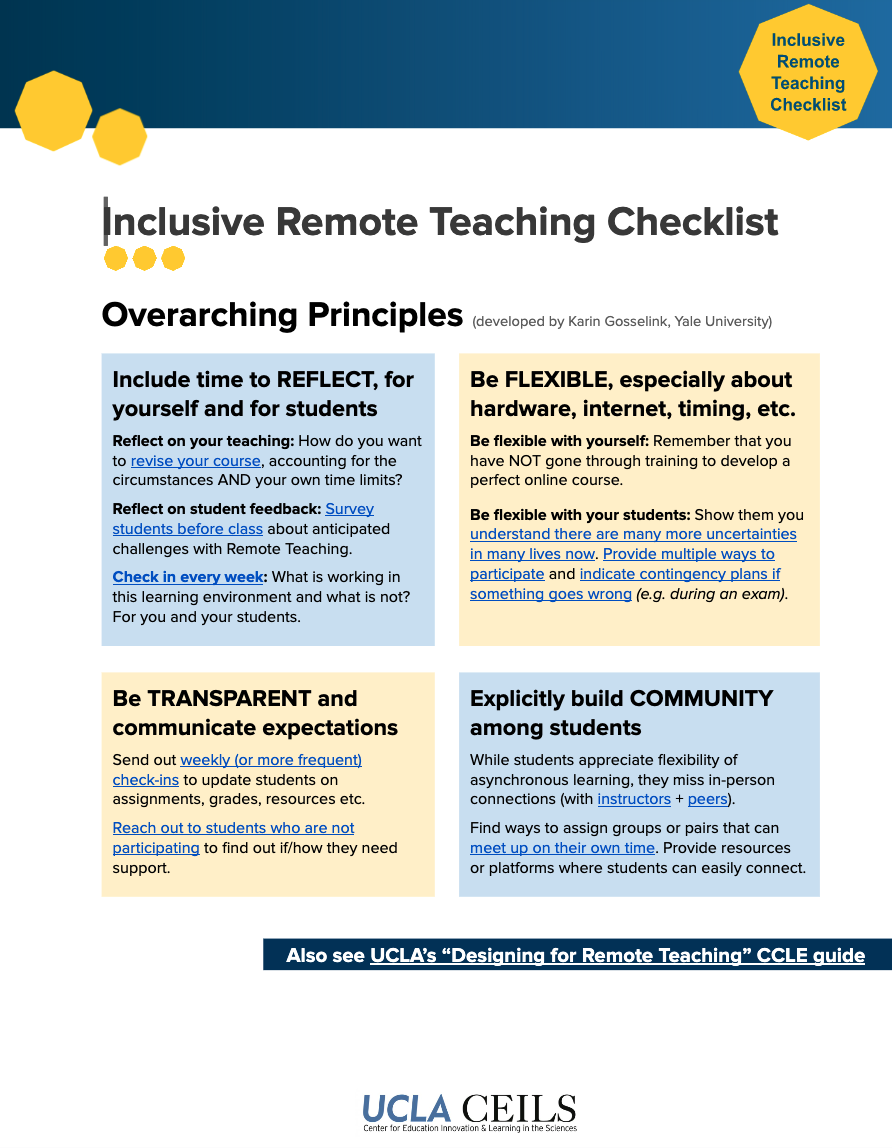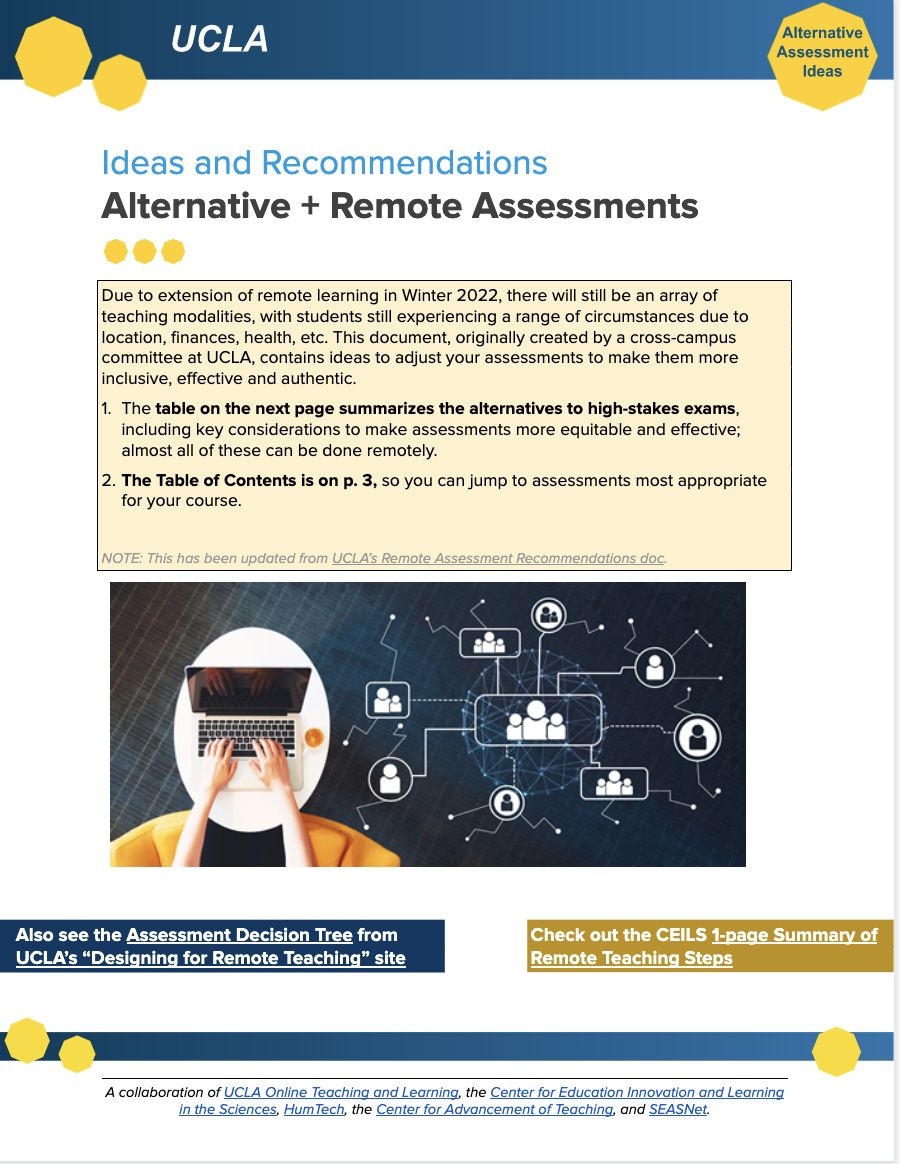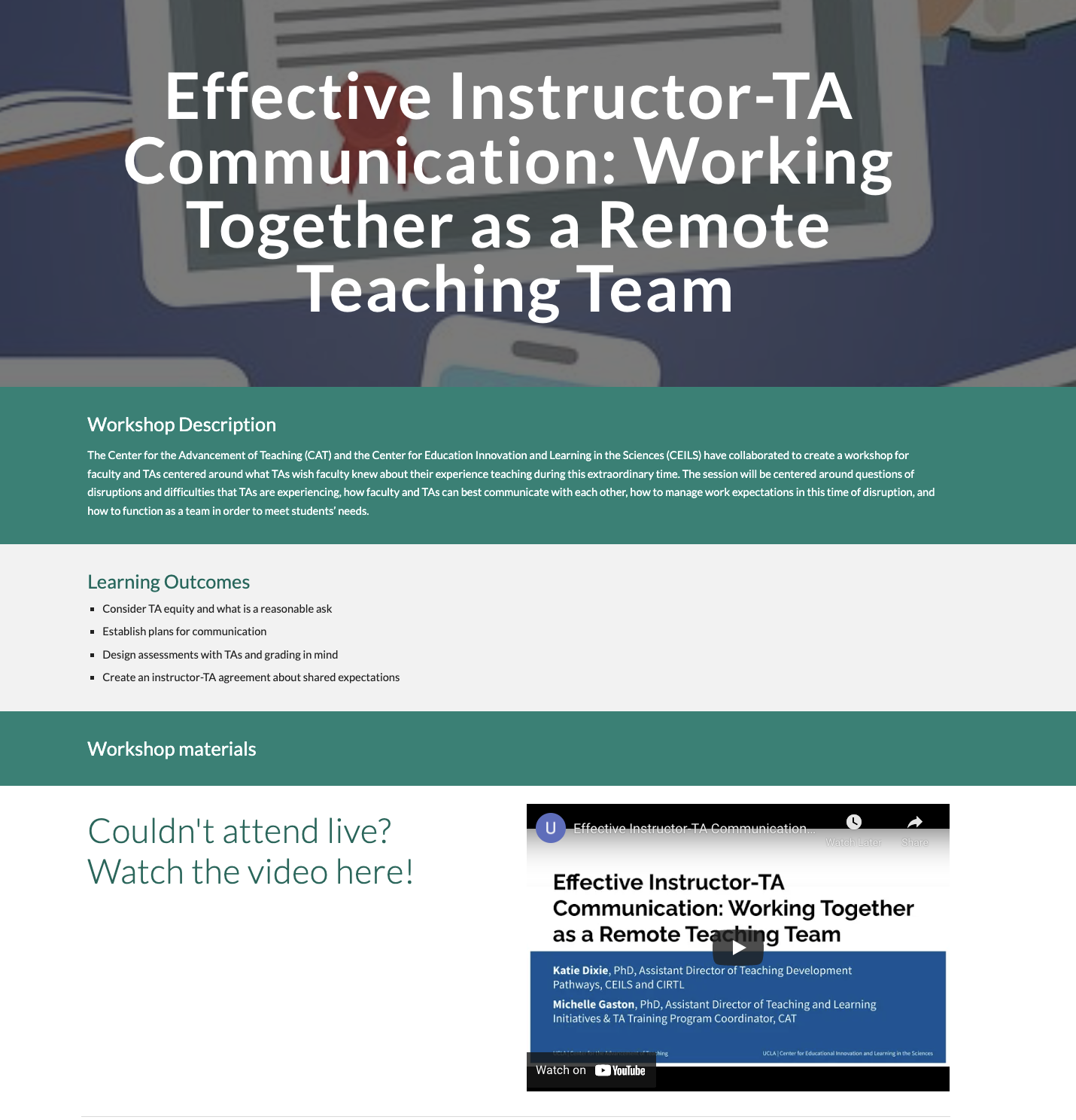WHY IS THIS IMPORTANT?
Why is it important to plan for a potential pivot to remote teaching if my course is scheduled face-to-face?
The COVID-19 pandemic forced higher education to pivot without notice to remote teaching. While this experience was chaotic and negatively impacted learning, it also provided opportunities for reflection on how we engage students in the learning process, the use of technology within and outside of the classroom, and the need to build in flexibility (and compassion) more explicitly into our course design processes.
Even prior to the pandemic there were many reasons why an in-person classroom experience may need to be suddenly cancelled or shifted online – such as nearby smoke and fires or other campus emergencies, or an individual instructor’s illness or travel needs (e.g. presenting at a conference). While the pandemic is seemingly drawing closer to an end, the possibility of new strains and sudden increases is still a possibility.
Keeping this flexibility in mind as you design your course can prevent stress later on should the need arise. It also can support a more flexible strategy that leads to a stronger sense of community and support for your students.
HOW CAN I IMPLEMENT THIS SUCCESSFULLY?
Taking extra steps to prepare for your course for a pivot to hybrid instruction does indeed take extra time and effort. However, after the inital work or redesigning and building out your course you may find that subsequent offerings are much easier to prep, as materials (such as recorded lectures, quizzes, assignments) are simply transferred from one quarter to the next.
Strategies that will support a “quick pivot”
Is every class session planned and completely full without a minute to spare? Where might you build in a bit more flexibility? Evaluate your course goals and consider if there are any topics that can be removed or offered as additional resources. What are the most essential things students need to learn in your course? What topics are nice to include if time allows? Try to create a schedule that allows you one open class session towards the end of the quarter.
Develop or repurpose recorded lecture materials. If you recorded lectures during the pandemic or have Bruincast lectures from the past, consider how you might utilize these to make more time in class for practice and discussion. If you have to cancel a class or provide more flexibility for students who may not be able to attend, having a recording as a back-up or additional resource can be very helpful. It is recommended to include a short quiz with a few points for students to provide incentive to watch the full recordings.
Get comfortable with Zoom. At this point, you may be Zoomed out. But…if you still are not sure how to launch a meeting, use polls, start breakout groups – go ahead and start practicing those tools.
Consider office hours on Zoom (in addition to in person). Adding an extra office hour on Zoom can provide additional options for your students. You can use this time to try out some Zoom tools and get to know students who might be a little too intimidated to come to your office.
Start experimenting with Bruin Learn tools and/or attend some trainings. Consider how you might have students engage with each other outside of class using interactive tools. You don’t need to become an expert on Bruin Learn, but push yourself to choose one new thing to try each quarter.
WANT TO DIG DEEPER?
Inclusive Remote Teaching Checklist
With an overarching framework includes the core principles of reflection, flexibility, communication, and community building, this document provides step-by-step guidance on how to prepare to teach in a remote format. Includes how to best communicate with your students prior to and during the course.
Are you overwhelmed and unsure about where to start on your course adaptation? Check out this 1-page summary guide, organized by the amount of planning time you have available.
Alternative Assessment Recommendations for Remote Teaching
This document, created by a cross-campus committee at UCLA, contains ideas to adjust your assessments to make them more inclusive, effective and authentic.
Effective Communication with Teaching Assistants (During Remote Teaching)
The Center for the Advancement of Teaching (CAT) has developed a wonderful website highlighting resources and strategies for effective remote team teaching with your TAs including resources from a recent workshop on this topic co-facilitated by CAT’s Assistant Director and TA Training Program Coordinator, Michelle Gaston, and CEILS Assistant Director, Katie Dixie.



